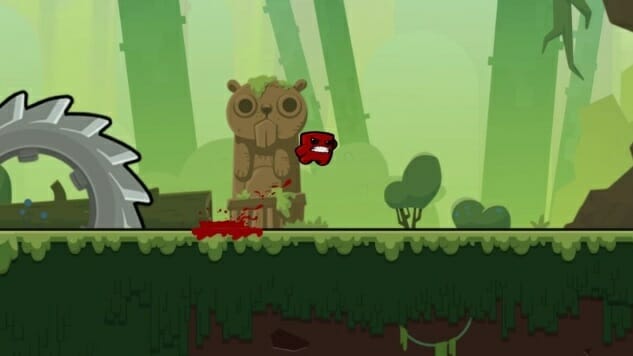Super Meat Boy Forever Plants the Seeds of Freedom with a Unique Approach to Level Design

It’s been nine years since the release of Super Meat Boy. Once considered a pillar establishing what we now label as “indie gaming,” the Flash-cum-PC title combined a quirky premise and art style with absolutely punishing gameplay, which turned out to be a winning combination.
Fast forward almost a decade. Super Meat Boy Forever is back and hoping to pick up right where it left off. And this time, it’s competing with better versions of itself. In the time it’s been out of the spotlight, dozens of games inspired by Super Meat Boy have come and gone, and by now, there’s no longer a novelty behind what made the game tick. I myself missed out the first time around, as I was busy with other games when Super Meat Boy was in its heyday. With an oversaturated market and a bevy of popular imitators to contend with, can it still hold its own?
Super Meat Boy Forever, as creative director Tommy Refenes tells me, boasts over 7000 levels, a feat made possible by the team’s use of “blocks”—that is, small chunks of arranged obstacles and environmental hazards that can be assembled in sequence to comprise the level. Refenes says this was in part to maintain a competitive edge in light of the changing indie landscape. “The landscape, 2010 vs. 2019, 2020 is insane,” he tells me at PAX West. “There’s so much good content, so many good games, it does feel a little bit like we gotta step it up a bit. Which is why we kinda went this direction because if we just would have done the exact same thing over again, it would have been a little boring.” Instead of being procedurally generated, each game save file itself has its own “seed,” a static and unchangeable level configuration that is unique to that save file. “Our thinking is, everyone will see these different levels and different orders and everything if they’re playing through the game enough. It’s a different way to present Meat Boy and get people back to playing it. You can share your level seeds with people so you can be like, ‘Oh, we’re gonna run this seed’ or something like that, like the daily runs on Spelunky.”

The seed factor makes it easy to imagine a whole new streaming audience around the series. Refenes, however, says this was not a deliberate factor in the game’s design. “I think that’s just a nice perk. Because first and foremost it was like, ‘let’s make something fun and different.’ And if the streaming audience comes from that, awesome. But if it doesn’t, okay.